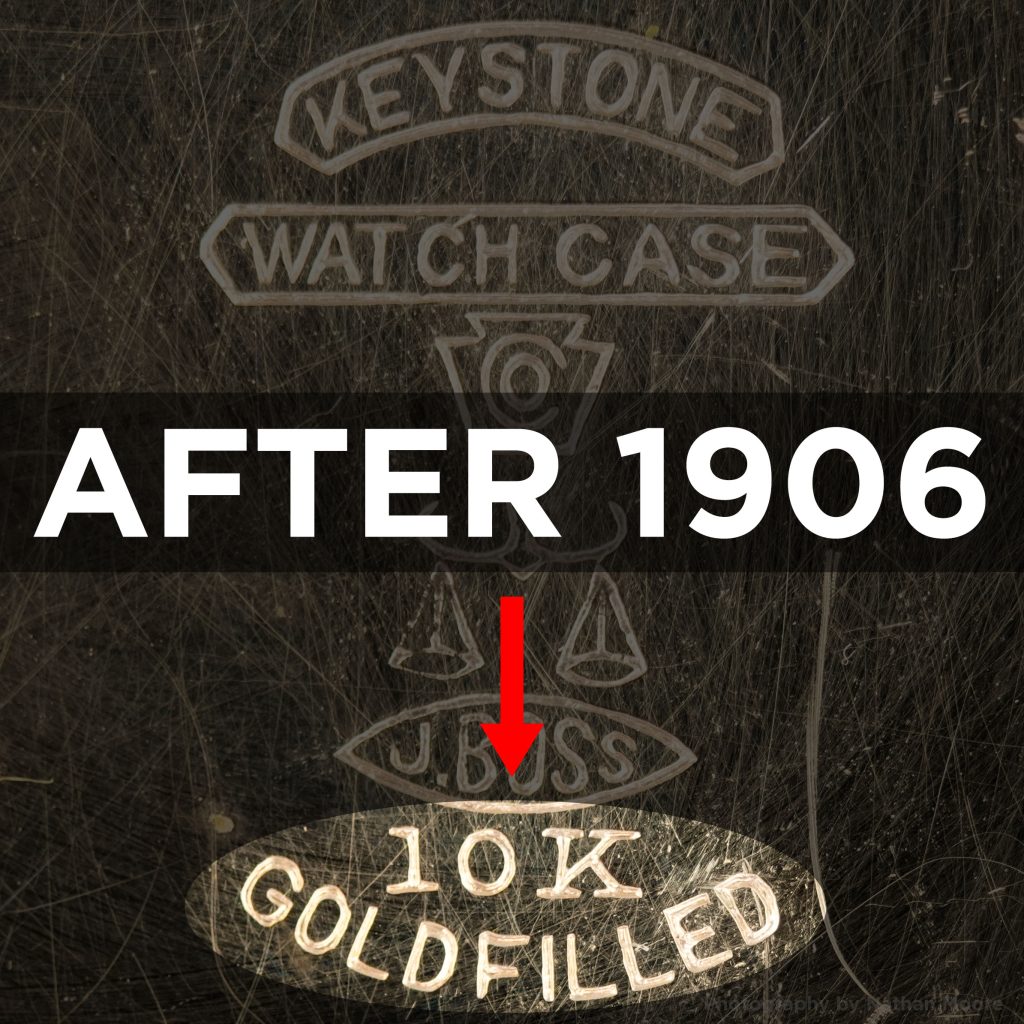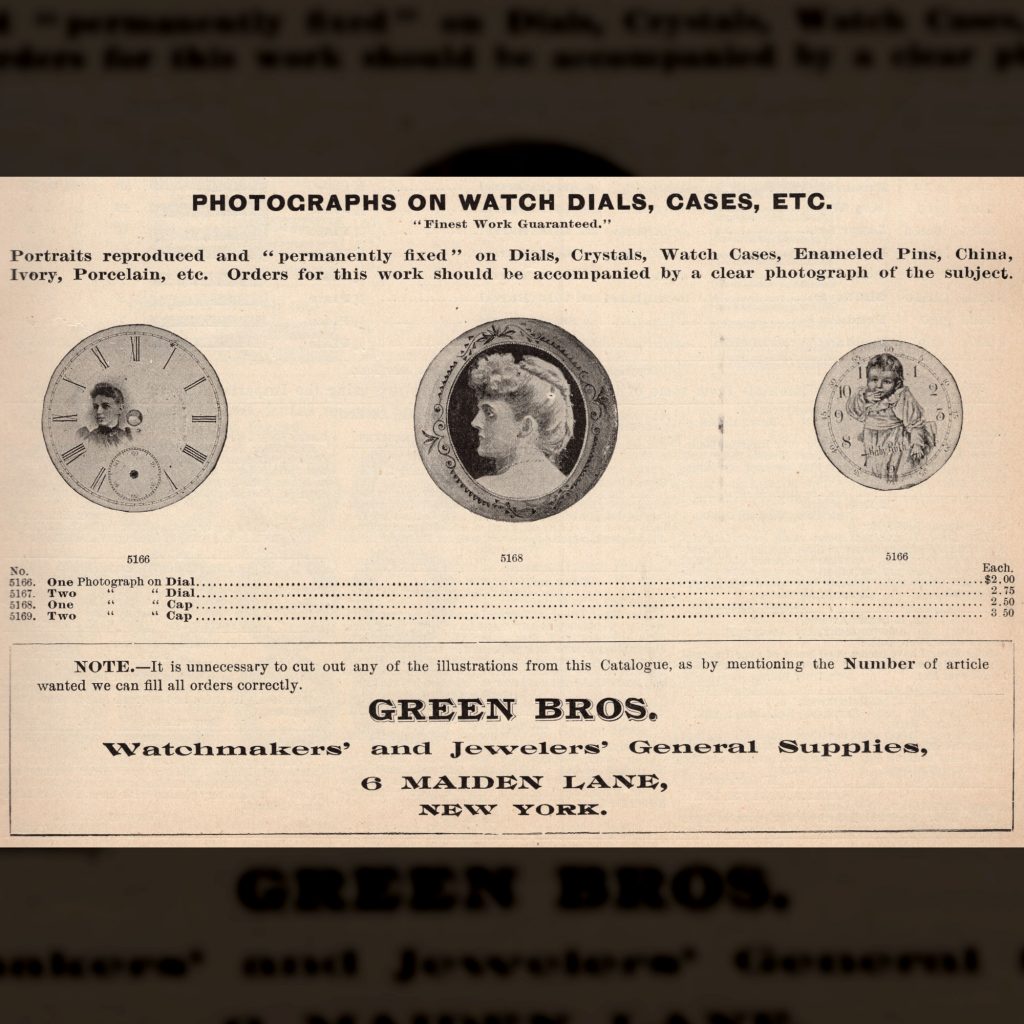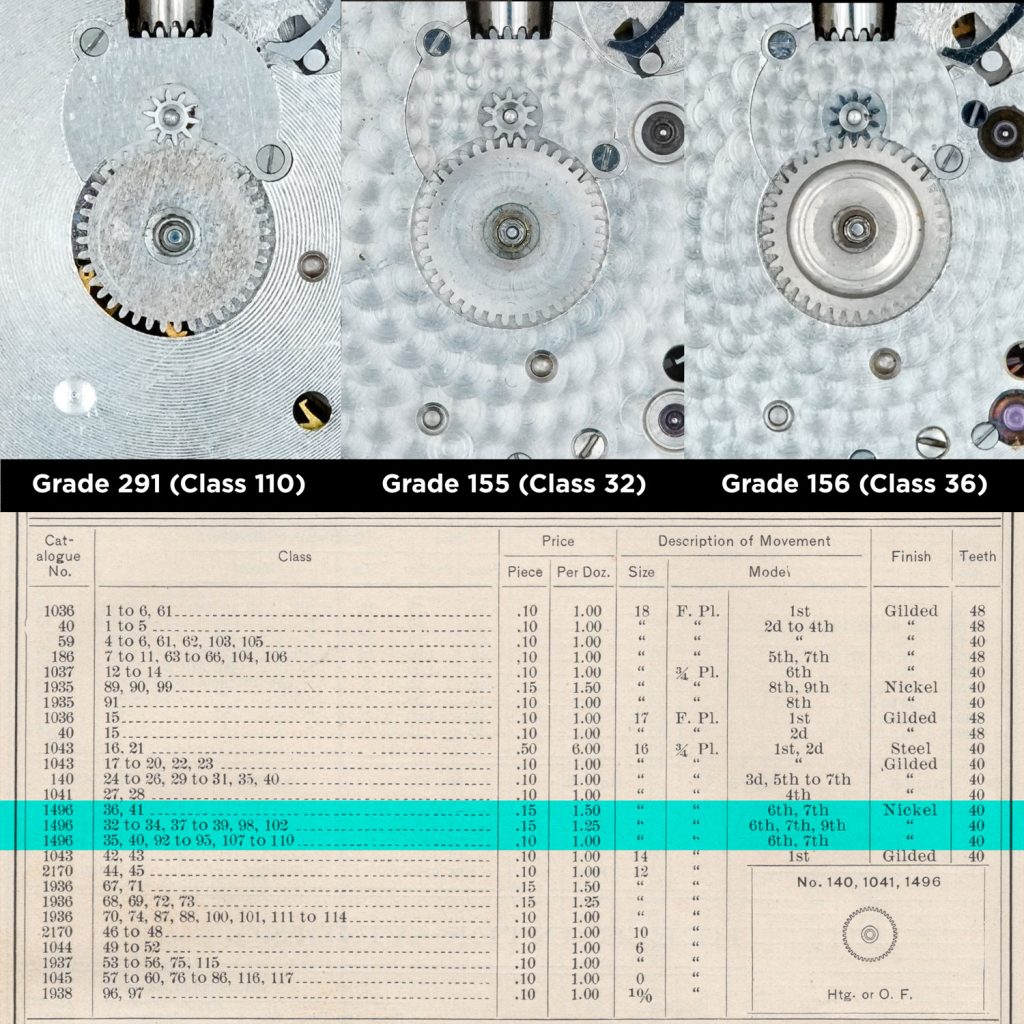Stamping Out Deception: How Early Federal Laws and the 1906 National Stamping Act Transformed the American Watch Case Industry

Markings on watch cases in the United States were unregulated at the federal level until 1905. Unfortunately, this environment nurtured deceptive practices in the watch case industry. From debased solid gold cases to implied government certification, case companies benefited from being able to skirt around the edges of honesty to benefit their bottom line.
In 1904, The Jewelers’ Board of Trade from New York, the Manufacturing Jewelers’ & Silversmiths’ Association. (MJSA), and retail-jeweler state associations lobbied for a national law to address the misleading practice of stamping “U.S. Assay” on gold jewelry, including watch cases.
On February 21, 1905, Congress passed a law prohibiting the stamping of “United States Assay” on gold products to prevent customers from believing these marks implied a guarantee by the U.S. Assay office. These marking practices caused problems in the market, especially when case companies continued to debase the gold content under the stamped purity mark slightly.
“CHAP. 720.—An Act To prevent the use of devices calculated to convey the impression that the United States Government certifies to the quality of gold or silver used in the arts.
Be it enacted by the Senate and House of Representatives of the United States of America in Congress assembled, That it shall be unlawful for any person, partnership, association, or corporation engaged in commerce among the several States, Territories, District of Columbia, and possessions of the United States, or with any foreign country, to stamp any gold, silver, or goods manufactured therefrom, and which are intended and used in such commerce, with the words “United States assay,” or with any words, phrases, or devices calculated to convey the impression that the United States Government has certified to the fineness or quality of such gold or silver, or of the gold or silver contained in any of the goods manufactured therefrom. Each and every such stamp shall constitute a separate offense.”Act of Feb. 21, 1905, ch. 720, 33 Stat. 732 (codified as amended at 15 U.S.C. §§ 291–292), available at https://www.govinfo.gov/content/pkg/STATUTE-33/pdf/STATUTE-33-Pg732.pdf.
After the act was passed, case companies in the United States quickly terminated the use of such marks. As a result, we can safely date any American gold case with “U.S. Assay” markings to before c.1905.
Despite the law being approved by Congress, there were still problems with misleading marking habits practiced on jewelry, including watch cases. Many leading associations in the jewelry industry lobbied for tighter regulation on marking practices to address unscrupulous manufacturers that were exploiting the lack of proper regulation.
On June 13, 1906, Congress passed a law to establish a national standard for truthful purity markings. The National Gold & Silver Stamping Act was a comprehensive reform that required honest markings, specifying tolerances allowed compared to the purity marking on items. While the bill covers all articles of jewelry, we will focus on the aspects affecting the watch case industry.
Source: Act of June 13 1906, ch. 3289, 34 Stat. 260–262 (National Gold & Silver Stamping Act), available at https://tile.loc.gov/storage-services/service/ll/uscode/uscode1958-00301/uscode1958-003015008/uscode1958-003015008.pdf.
- Gold articles (§ 2)
- General tolerance for most gold articles (excluding watch cases and flatware): ≤ 0.5 karat below the stamped fineness on a solder-free test piece.
- Watch Cases: stricter 0.003 (3 ppt) tolerance (~0.07k on a 24k scale). Market Implication: For the watch industry, this prohibited the practice of marking a case with “18” when the actual purity was debased to 16k or 17k.
- Whole-article (including solder) assay: ≤ 1 karat below the mark. To determine compliance, the assayer would remove other parts and test only the gold alloy in the case body, cover, bezel, pendant, and bow (plus any solder).
- Silver articles (§ 3)
- General tolerance: ≤ 0.004 (4 ppt) below the mark.
- “Sterling” = 0.925 fine; “Coin” = 0.900 fine, each with the same 0.004 tolerance.
- Whole-article assay (incl. solder): ≤ 0.010 (10 ppt) below the mark.
- Plated / gold-filled goods (§ 4)
- A karat or purity mark cannot appear unless the words “gold-filled,” “rolled gold plate,” “electroplate,” etc., are shown with equal prominence. Market Implication: Stamping a purity mark such as “14K” or “18K” became illegal unless the mark plainly indicated “that the article or part of the article is plated.” For this reason, marks like the one stamped on the Fahys Monarch cases with “14K” in the late 1890s were outlawed even though Fahys had already discontinued the mark.
- Using “sterling” or “coin” on plated silver goods is prohibited.
The bill applied to all goods made after June 13, 1907, exchanged in interstate or foreign commerce. The penalty for violation was classified as a misdemeanor, punishable by up to a $500 fine or up to three months imprisonment or both.
The bill was widely supported and welcomed in the industry as it leveled the playing field for honest manufacturers. By 1907, markings on watch cases had evolved to meet the new standards, and some case grades were discontinued – likely due to the inability to adhere to the new standards within a competitive market.
Companies like the Keystone Watch Case Company began marking some cases with a purity mark and case type, and solid gold cases were marked with more reliable fineness indicators. Other companies simply omitted karat fineness from case markings so they would risk violating the new laws.
Watch Case Dating Hints
For modern watch collectors, understanding the timeline of these federal laws can provide insight into extrapolating an estimated date from a watch case based on markings.
- If the case is marked “U.S. Assay”: Before 1905
- If the case is marked with a purity mark but not case composition: Before 1907
- If the case is marked with a purity mark AND composition: Likely After 1907
- Bonus Hint: If the case is marked with a year-based guarantee: Before 1924



